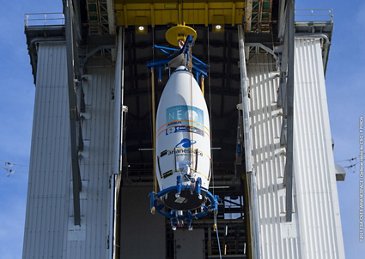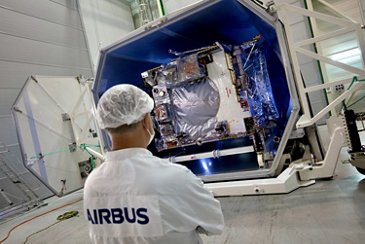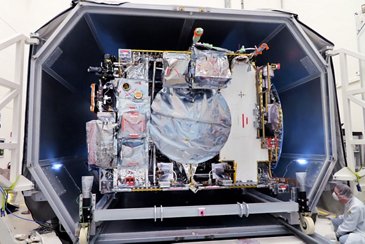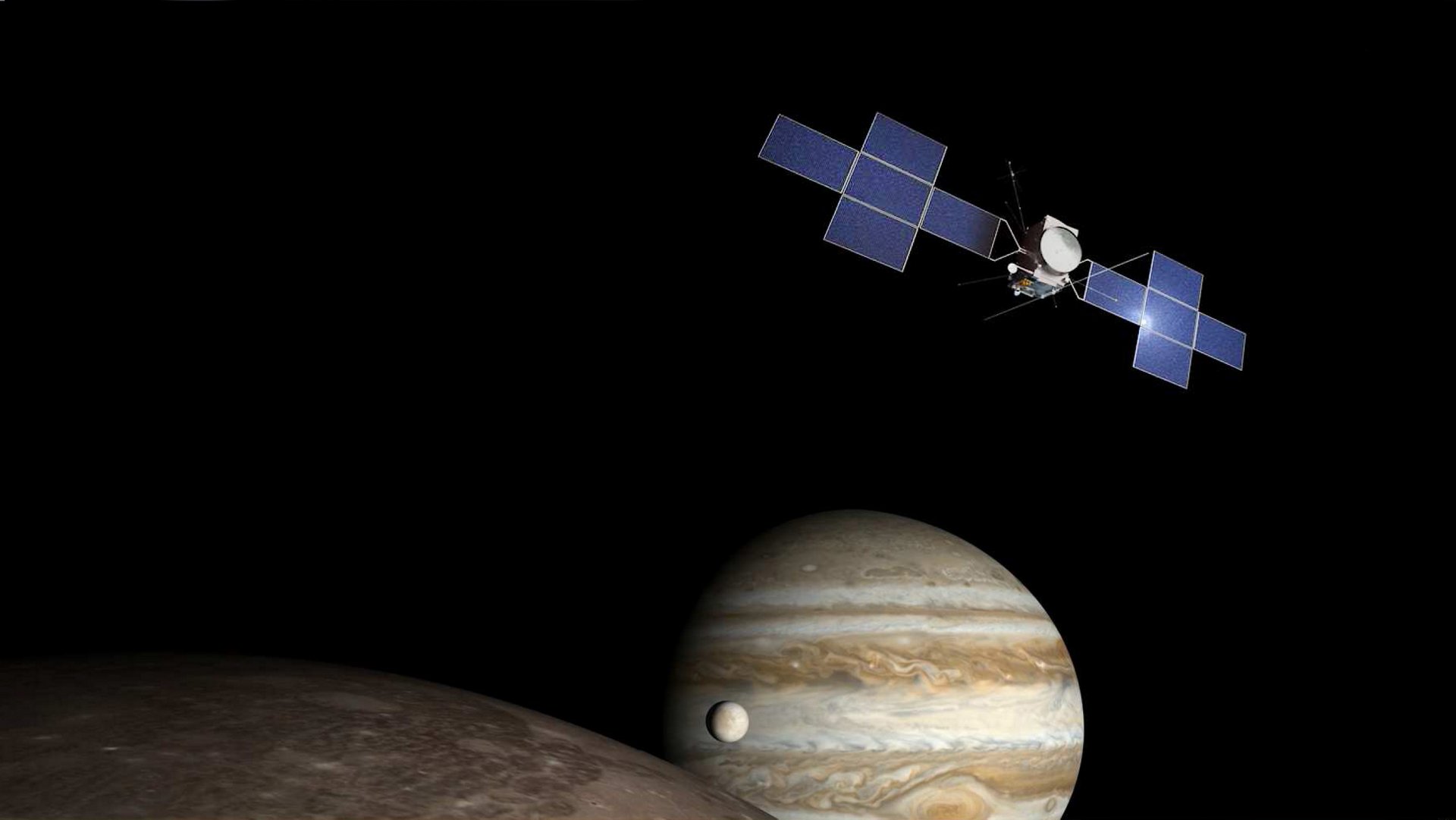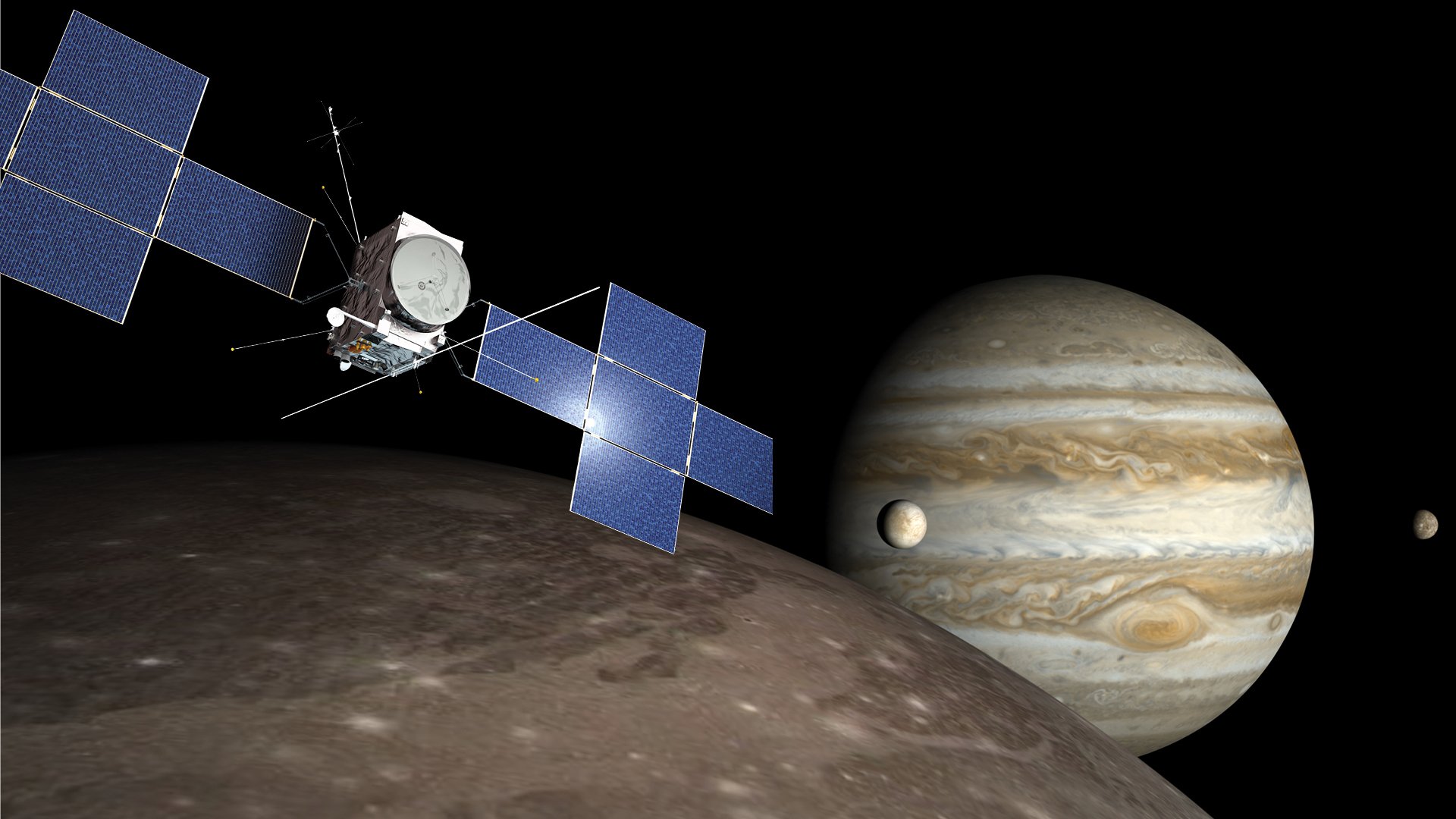
JUICE
Searching for life on Jupiter’s icy moons
Airbus is developing and building JUICE (JUpiter ICy moons Explorer) spacecraft for the European Space Agency, which will study Jupiter and its icy moons. As prime contractor, Airbus will employ 150 people and lead a consortium of more than 60 companies during the course of the project.
In May 2022, JUICE will begin a 7.6 year cruise to Jupiter to spend three and a half years in the Jovian system. Its main mission will be to explore the huge planet’s three largest icy moons in the hope of determining whether life is possible on these dwarf planets. What if extra-terrestrial life does exist? For centuries, this question – which both fascinates and frightens mankind – has remained unanswered. But by the year 2030, answers to the questions: how do planets form? how does life emerge? how does the solar system work? may well have been found.
| 3 and a half years |
Airbus |
Almost 100m² | 600 million kilometers |
|---|---|---|---|
| Mission time | Prime contractor | Largest solar arrays ever built* *for any interplanetary spacecraft |
Distance to reach Jupiter |
In July 2015, the company was selected by the European Space Agency (ESA) as prime contractor for the design, development, production, and testing of a new spacecraft named ‘JUICE’. As its name implies (Jupiter Icy Moons Explorer), the mission will be to explore the Jovian system, focusing on three of Jupiter’s huge Galilean moons: Europa, Ganymede and Callisto, which are as large as dwarf planets and covered by an icy crust.
If you can get to Jupiter, you can do anything
Vincent Poinsignon, JUICE Project Manager
It will take JUICE seven and a half years to travel the almost 600 million kilometres to the gas giant. Once the spacecraft enters Jupiter’s gravitational field, the first two and a half years of its three-and-a-half-year mission will be spent making about 30 observation overflights of the three moons, observing examining gravity and magnetic interactions, amongst other things. The last year will be spent in orbit around Ganymede to observe this moon in much greater detail.
The challenges are enormous. JUICE must deal with very low and very high temperatures as it will circle Earth, Mars and Venus for gravity assist manoeuvres to build up enough speed to reach Jupiter’s orbit. Jupiter’s cold environment also makes it hard to collect energy. "The goal is to investigate whether there are liquid oceans under these icy crusts which might harbor organic components or even life" says Vincent Poinsignon, JUICE project manager.
As it will carry 10 scientific instruments that require a very high level of magnetic cleanliness, the spacecraft itself may cannot generate electromagnetic signals. As all electronic systems generate electromagnetic waves when they are in operation, the Airbus engineers have devised a way to reduce them as much as possible.
In March 2017, the project passed an important milestone, when the preliminary design of JUICE and its interfaces with the scientific instruments and the ground stations were fixed, enabling the build phase of the test models of the spacecraft to begin.
Latest JUICE News
